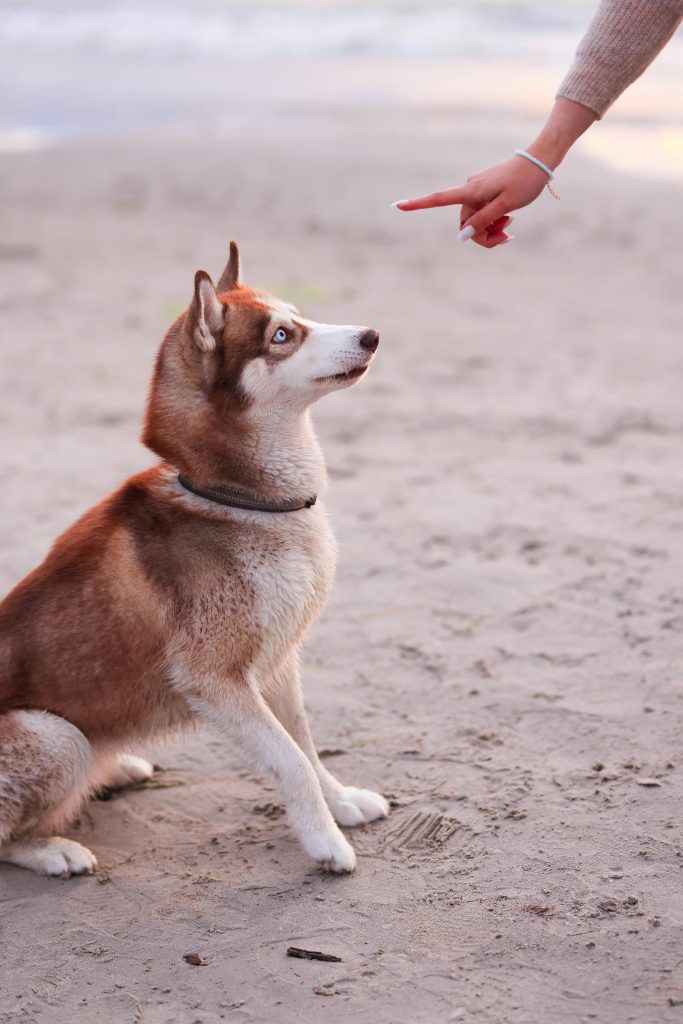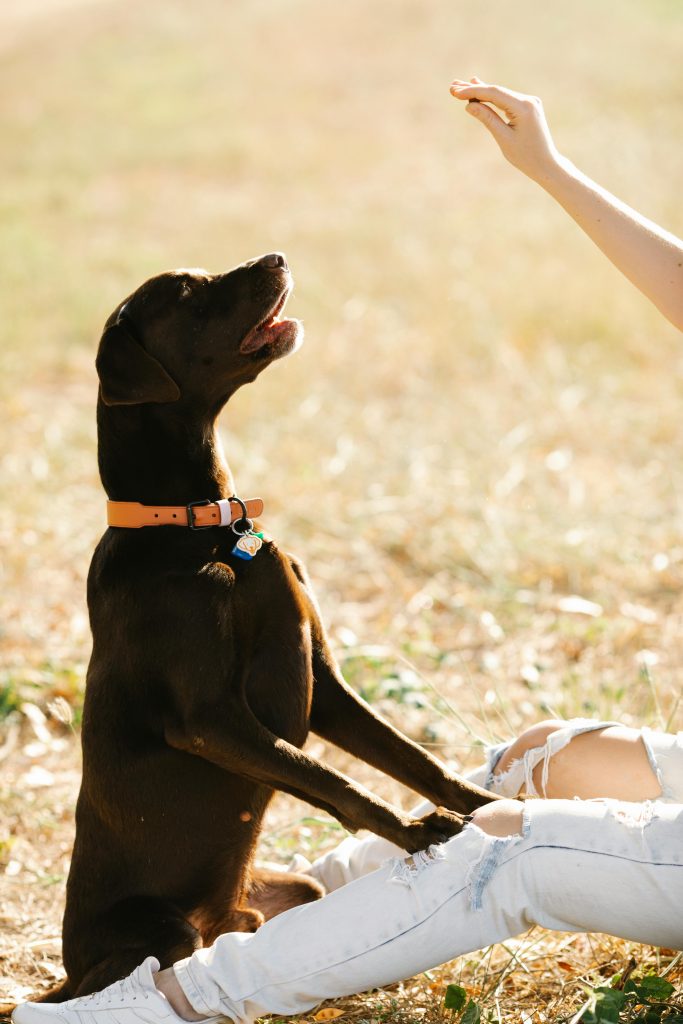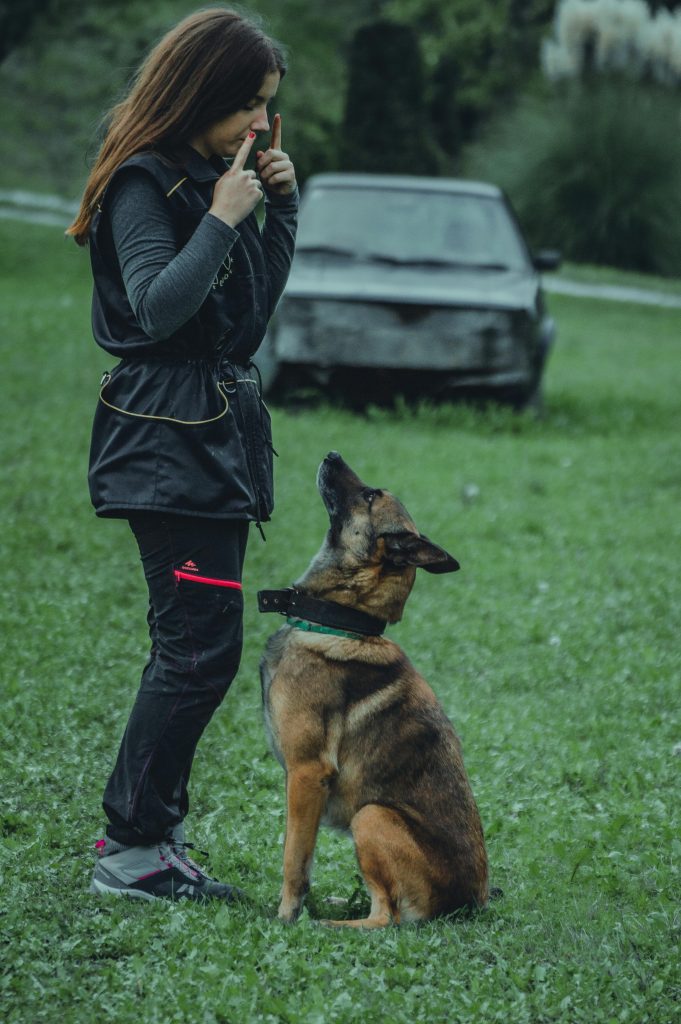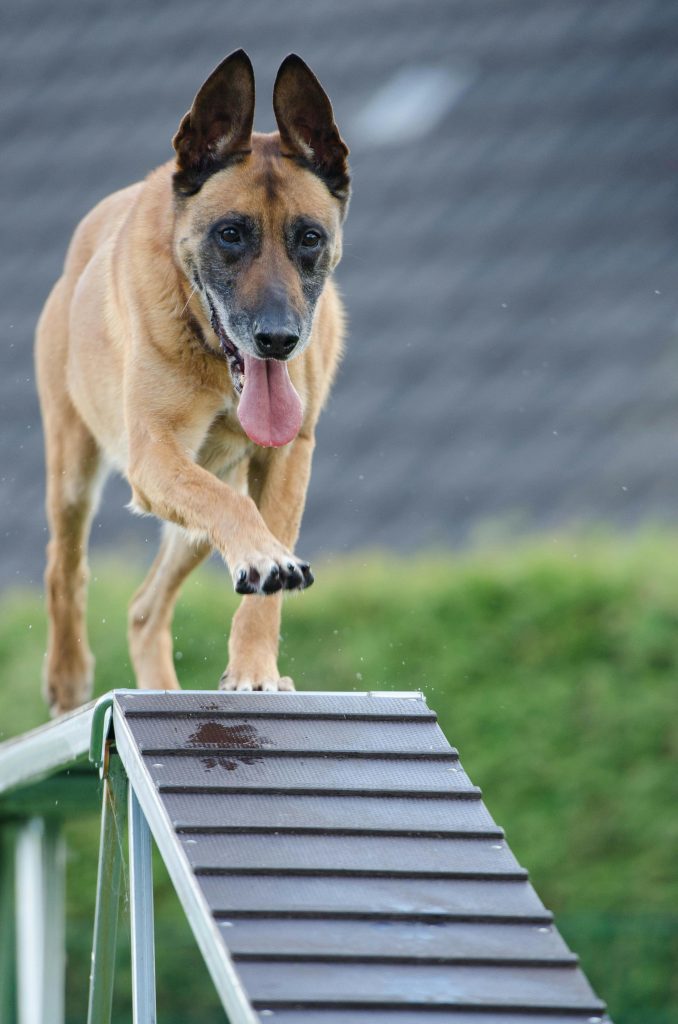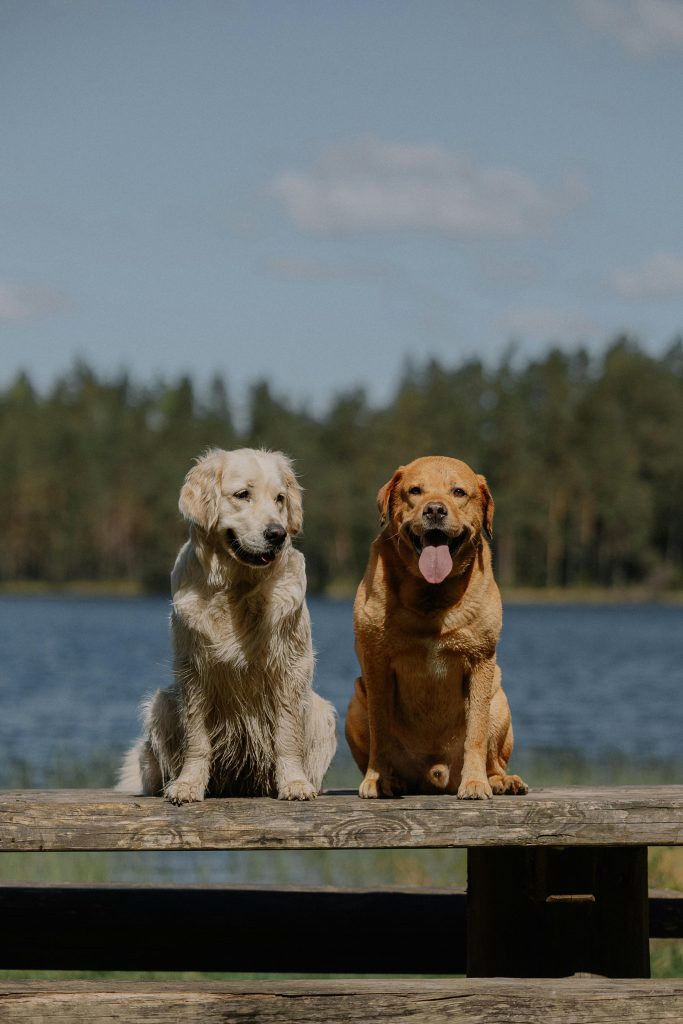
To train your dog to calm down, start by identifying their stress triggers through close observation.
Establish a consistent daily routine filled with regular exercise and structured activities to give them a sense of security.
Use positive reinforcement, rewarding calm behavior immediately with treats or praise.
Teach basic commands like ‘sit’ and ‘stay’ to improve obedience.
Create a calm environment by designating a quiet space, using calming scents, and playing soothing music.
Incorporate calming products like anxiety wraps and calming treats during stressful situations.
This post contains affiliate links. However all the information provided on this site are my own honest opinions. See more in Disclaimer.
By mastering these techniques, you’ll guarantee a happier, well-adjusted pet with more steps to perfect their calm behavior.
Table of Contents
Key Takeaways
- Identify and manage triggers causing anxiety or hyperactivity in your dog.
- Establish a consistent daily routine with set times for exercise, feeding, and rest.
- Provide regular physical exercise tailored to your dog’s breed, age, and health.
- Use positive reinforcement to reward calm behavior immediately and consistently.
Understand Your Dog’s Triggers
To effectively train your dog to calm down, you must first identify and understand the specific triggers that cause their anxiety or hyperactivity. Start by observing your dog closely.
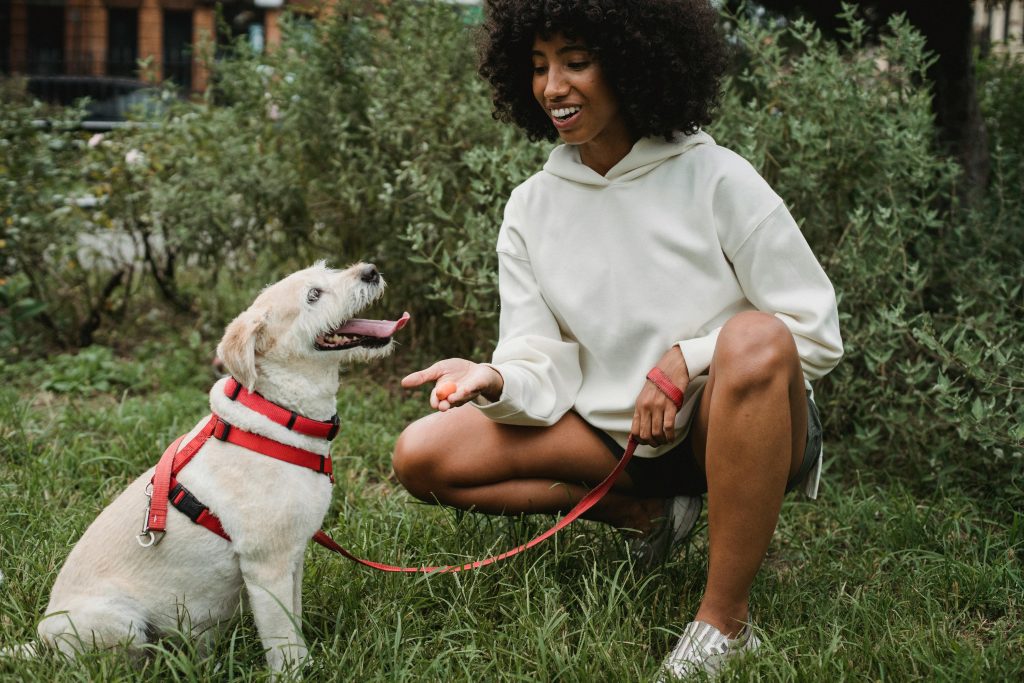
Pay attention to any behavioral cues that indicate stress, such as excessive barking, whining, pacing, or destructive chewing. Notice the situations or environments where these behaviors occur.
It’s essential to recognize your dog’s stress signals. These can include yawning, lip licking, tail tucking, and avoiding eye contact.
By understanding these signals, you can determine what specific factors are causing your dog to feel stressed or overly excited. Common triggers might include loud noises, unfamiliar people or animals, or changes in their daily routine.
Once you’ve identified these triggers, you can take steps to manage or mitigate them. For instance, if your dog gets anxious around new people, gradually introduce them to strangers in a controlled, calm manner.
If loud noises are a problem, consider creating a quiet, safe space for your dog to retreat to when they feel overwhelmed.
Understanding your dog’s unique triggers and stress signals is the first and most vital step in helping them achieve a calmer state.
Establish a Routine
Establishing a consistent daily schedule is essential for helping your dog feel secure and calm.
By sticking to a routine, you’ll create a predictable environment that fosters your dog’s sense of stability.
Make sure to incorporate regular exercise times to burn off excess energy and reduce anxiety.
Consistent Daily Schedule
Creating a consistent daily schedule for your dog helps establish a sense of security and predictability. By adhering to a regular routine, you can considerably improve your dog’s behavior and make training techniques more effective.
Dogs thrive on consistency. Knowing what to expect throughout the day minimizes anxiety and promotes calmness.
Start by setting specific times for feeding, bathroom breaks, playtime, and sleep. Consistency in these activities signals to your dog that they’re safe and their needs will be met regularly.
A structured schedule also makes it easier to identify and address behavioral issues. Deviations will be more noticeable.
Here’s a sample daily schedule for your dog:
| Time | Activity | Description |
|---|---|---|
| 7:00 AM | Morning Walk | 30-minute walk to expend energy |
| 8:00 AM | Feeding Time | Consistent meal portions |
| 12:00 PM | Midday Break | Quick bathroom and play break |
| 6:00 PM | Evening Walk | Another walk to burn off energy |
Utilize this schedule as a guide and adapt it to your dog’s specific needs. Reinforcing a consistent daily schedule guarantees your dog feels secure.
This helps streamline the training process, making it easier for them to learn and adhere to good behavior.
Regular Exercise Times
Incorporate regular exercise times into your dog’s daily routine to help them burn off excess energy and maintain a calm demeanor.
Establishing consistent morning walks and evening playtime is vital for your dog’s physical and mental well-being. This routine not only keeps them engaged but also helps reduce anxiety and restlessness.
- Morning Walks: Start the day with a brisk walk. This sets a positive tone and allows your dog to expend energy accumulated overnight.
- Evening Playtime: Dedicate time in the evening for active play. This can include fetch, tug-of-war, or agility exercises. Evening playtime helps your dog wind down before bedtime.
- Consistency: Stick to the same times every day. Dogs thrive on routine, and predictable exercise times can greatly improve their behavior.
Ensure that your dog’s exercise is tailored to their breed, age, and health condition. High-energy breeds may require more vigorous activities, while older dogs might benefit from gentler options.
Monitor your dog’s response to their exercise routine and adjust as needed.
Use Positive Reinforcement
Use positive reinforcement to reward your dog’s good behavior and guarantee consistent training sessions.
When your dog remains calm, offer treats or praise immediately.
This method strengthens desired behaviors and helps your dog understand what’s expected.
Reward Good Behavior
Rewarding your dog’s good behavior with positive reinforcement is one of the most effective ways to encourage calmness and obedience.
When you consistently reward your dog for exhibiting calm behavior, you’re teaching them that tranquility is beneficial.
Positive reinforcement involves giving your dog something they love, like treats, praise, or playtime, immediately following the desired behavior.
Trending in Dogs:
This method helps to solidify the behavior you want to see more frequently.
To use behavior rewards effectively, follow these steps:
- Identify the reward: Determine what your dog values most. Some dogs are food-motivated, while others might prefer a favorite toy or verbal praise.
- Immediate reinforcement: Timing is essential. Offer the reward immediately after your dog exhibits the calm behavior to create a clear connection.
- Consistency: Make certain that you reward the desired behavior every time it occurs. This reinforces the behavior’s positive outcome.
Consistent Training Sessions
To maximize the benefits of positive reinforcement, you must conduct consistent training sessions that reinforce calm behavior regularly.
Begin by establishing a daily routine that includes dedicated time for training. Consistency is key; your dog will learn faster and retain behaviors better when sessions are predictable.
Use effective training techniques like clicker training to mark desired behaviors immediately. Pair the click with a treat to build a strong association.
This method helps your dog understand exactly what action earned the reward.
Additionally, employ behavioral strategies such as setting up situations where calm behavior is likely to occur.
For example, practice commands like ‘sit’ or ‘down’ in a quiet environment before gradually introducing distractions.
Always remain patient and avoid punishing your dog. Instead, focus on rewarding calm behaviors. For instance, if your dog lies down calmly, offer praise or a treat.
Over time, these positive reinforcements will encourage your dog to repeat the calm behavior. Ensure each session is short but frequent, ideally 5-10 minutes, multiple times a day.
This approach helps maintain your dog’s attention and prevents burnout.
Exercise Regularly
Regular exercise is essential for keeping your dog calm and well-behaved. Without sufficient physical activity, dogs often become restless, anxious, and sometimes even destructive.
Engaging in outdoor activities not only helps expend their excess energy but also provides much-needed mental stimulation. Here’s how you can guarantee your dog gets the exercise they need:
- Daily Walks: Aim for at least one long walk each day. This routine not only helps tire them out but also offers opportunities for socialization and exploration, which are crucial for their mental health.
- Play Fetch: A game of fetch in the park or your backyard is a fantastic way to burn off energy quickly. The repetitive action of running and retrieving keeps them physically engaged and mentally alert.
- Agility Training: Set up an agility course in your yard or join a local agility class. Maneuvering through obstacles provides both physical exercise and mental challenges, keeping your dog sharp and focused.
Teach Basic Commands
Teaching your dog basic commands is vital for establishing control and ensuring their safety. Start with fundamental commands like ‘sit,’ ‘stay,’ and ‘come.’
These basic obedience skills form the foundation for more advanced training and help your dog understand what’s expected of them.
To begin, use positive reinforcement as your primary training method. This means rewarding your dog with treats, praise, or play whenever they correctly perform a command.
For example, to teach ‘sit,’ hold a treat close to your dog’s nose, then move your hand up, causing their bottom to lower. Once they’re in a sitting position, say ‘sit,’ and immediately reward them.
Consistency is important. Practice these commands in short, focused sessions of about 10-15 minutes, multiple times a day.
Repetition helps reinforce learning and keeps your dog engaged without overwhelming them.
Incorporate these commands into daily routines. Ask your dog to ‘sit’ before meals or ‘stay’ when you open the door.
This integration cements their understanding and makes obedience a part of their everyday life.
Create a Calm Environment
Establishing a calm environment is vital for helping your dog learn to relax and manage their energy levels effectively.
Start by creating a designated calm space for your dog. This should be a quiet area in your home where your dog can retreat when they need to unwind.
Make sure this space is free from distractions and loud noises.
To enhance this environment, consider using calming scents. Scents like lavender and chamomile have been shown to reduce anxiety in dogs. You can use essential oil diffusers or sprays specifically designed for pets.
In addition to calming scents, play soothing music to help your dog relax. Music with a slow tempo or classical tunes can have a calming effect on dogs.
You can find playlists or albums created specifically for this purpose.
Here are three steps to create a serene environment:
- Designate a quiet, distraction-free space: This is essential for giving your dog a place to escape from stress.
- Use calming scents: Lavender and chamomile can help reduce anxiety.
- Play soothing music: Slow tempo or classical music can help your dog relax.
Utilize Calming Products
Incorporating calming products into your dog’s routine can greatly help manage their anxiety and promote relaxation.
Calming treats, often infused with ingredients like chamomile, valerian root, or CBD, can be a quick and effective way to soothe your pet.
Administer these treats as per the recommended dosage on the packaging, typically during stressful situations like thunderstorms or vet visits.
Another highly effective product is the anxiety wrap. These wraps apply gentle, constant pressure to your dog’s torso, akin to swaddling a baby.
This pressure can have a calming effect, reducing your dog’s stress levels.
Make sure to choose the correct size and fit the wrap snugly without restricting movement. Introduce the wrap gradually, letting your dog wear it for short periods initially, then extending the time as they become more comfortable.
Additionally, consider using pheromone diffusers or sprays that mimic the natural comforting pheromones produced by nursing dogs.
These can create a calming environment when used in areas your dog frequents.
Frequently Asked Questions
Training a dog is a marathon, not a sprint. With consistent training and calming techniques, you’ll usually see noticeable results in a few weeks. Stick with it, and your patience will pay off.
Yes, professional dog trainers can help calm an anxious dog. They use specialized trainer techniques to identify and address anxiety triggers. Ultimately, they provide a structured approach to reducing your dog’s stress and improving behavior.
Think of breeds like Jack Russells as live wires; they never seem to stop. Yes, certain dog breeds are more prone to hyperactivity. Breed tendencies play a significant role in determining if a dog is naturally more hyperactive.
Your dog’s diet can greatly impact anxiety levels. Incorporate proper nutrition and consider calming supplements like omega-3 fatty acids or L-theanine. These can help reduce stress and promote a more relaxed demeanor in your pet.
Remember Old Yeller? If your dog’s behavioral signals like excessive panting, pacing, or aggression seem severe and persistent, it’s time to consult your vet for professional guidance. If anxiety triggers routine issues, it’s time to consult your vet for professional guidance.
Conclusion

By understanding your dog’s triggers, establishing a routine, and using positive reinforcement, you’ll create a calmer, happier pet.
Regular exercise and teaching basic commands are essential steps, much like laying a strong foundation for a sturdy house.
Don’t forget to create a peaceful environment and use calming products if needed.
With these strategies, you’ll transform your dog’s behavior, making your home a sanctuary of tranquility for both of you.




